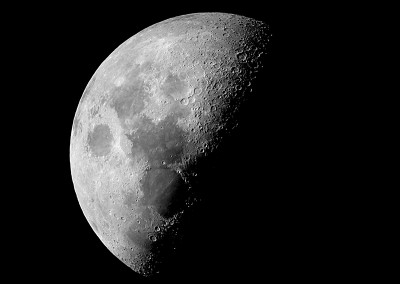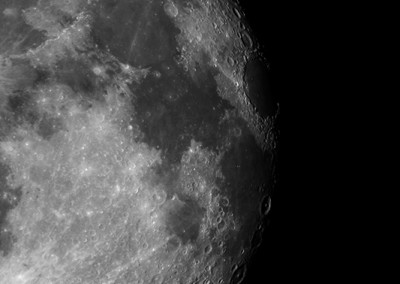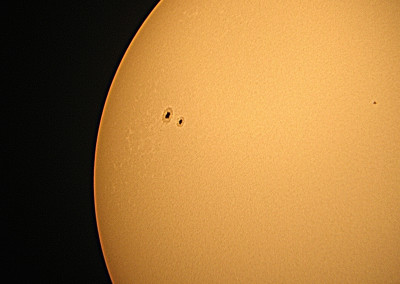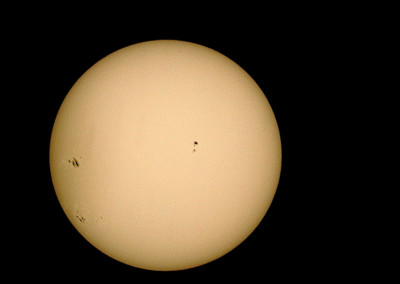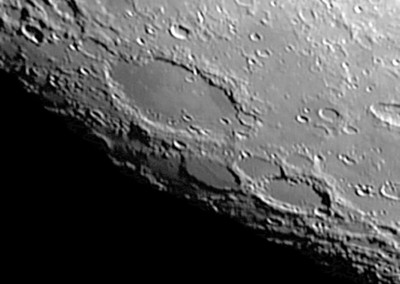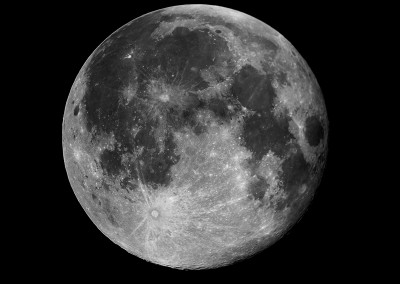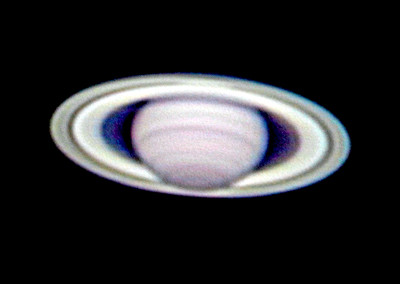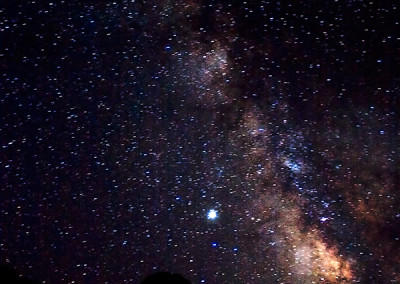Astronomy
First Quarter Moon
The phases of the moon always follow the same sequence. The New Moon cannot be seen because the side facing us is dark, and the moon, which is between Earth and the sun, is lost in the glare of the sun. Next comes the Waxing Crescent Moon, during which a bright sliver on the moon’s eastern (right) side grows larger with each passing night. The First Quarter Moon is half lit on the eastern side. Next is the Waxing Gibbous Moon, when more than half of the eastern side of the moon is lit. The lighted portion continues to grow each night until the moon is full. A Full Moon occurs when the entire disk of the moon is brightly lit. Next is the Waning Gibbous Moon, when more than half of the moon is lit on the western (left) side. At the Third Quarter, the western half is lit. The Waning Crescent Moon is less than half lit on the western side, and the lighted portion continues to shrink each night until the New Moon. This photo was taken on 18 December 2004.
Lunar Eclipse 1033
A lunar eclipse occurs when the Earth orbits directly between the moon and the sun, casting a shadow that completely covers the moon, as in this photo, taken at 10:33 PM, EDT on 27 October 2004. If the Earth had no atmosphere, the part of the moon lying in the Earth’s shadow, or umbra, would appear completely black. Our atmosphere, however, refracts sunlight so that some of the sun’s rays do fall on the moon’s surface during a lunar eclipse. Our nitrogen/oxygen atmosphere scatters blue light more than red light – which is why the sky looks blue – and during a lunar eclipse the sunlight that reaches the moon must pass tangentially through hundreds of miles of Earth’s atmosphere, scattering nearly all of its blue light, leaving only the longer, redder wavelengths. It is this refracted red light that gives the eclipsed moon its coppery glow.
Transit of Venus 01
The planet Venus passes exactly between us and the sun and appears to pass across or “transit” the sun’s disc in paired events spaced 105 or 122 years apart. The first and second transits of each pair are separated by about 8 years. This photo was taken at 7:08 am EDT on June 8, 2004, just as Venus was completing its first transit of the sun since December 6, 1882. The next transit of Venus will occur on June 6, 2012, and will be best seen from the western United States, the Pacific Rim, Australia, Eastern and Central Asia, and East Africa. The pink hue of the sun in this shot is the result of the Baader solar filter used to block more than 99.999% of the sun’s light from entering – and literally burning up – the camera.
Milky Way over Zion 1237
The spiral of the Milky Way Galaxy is composed of about one trillion stars. Our solar system lies within the Milky Way’s Orion Arm, about four-fifths of the radius from the core. From Earth, we see the galaxy edgewise. In the photo, the bright, bulging core of the galaxy is at the lower right, and one edge of the galaxy slants away toward the upper left. The galaxy on the other side of the bulge lies mostly below the horizon when seen from Earth’s northern hemisphere. Part of the galactic core is obscured by a narrow streak of dark dust, called the Great Rift, that runs parallel to the plane of the galaxy. In this shot, individual stars appear not as pinpoints but as short dashes — as a result of the rotation of the earth during the sixty-three seconds of the exposure. The bright star-like object near the center of the frame is the planet Jupiter.
